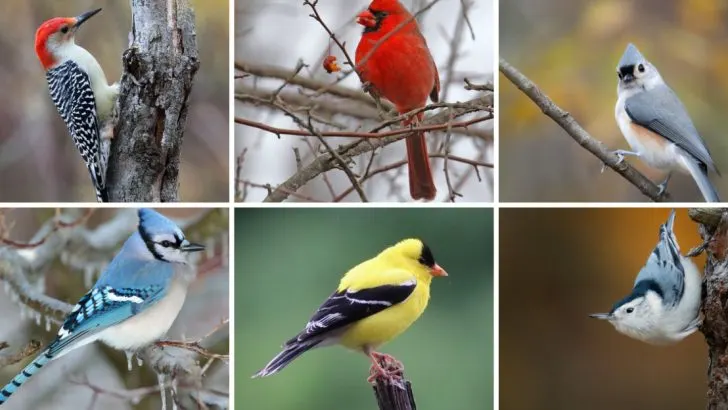Winter may bring chilly weather and barren trees, but it also provides a wonderful opportunity to spot some of nature’s most stunning feathered visitors.
While many birds migrate to warmer climates, others stick around, gracing backyards with their vibrant colors and lively songs.
In this list, we’ll introduce you to 11 beautiful backyard birds you’re likely to see during the winter months. Whether you’re a seasoned birdwatcher or a curious nature enthusiast, these avian wonders are sure to bring a touch of warmth and beauty to your winter days.
Northern Cardinal
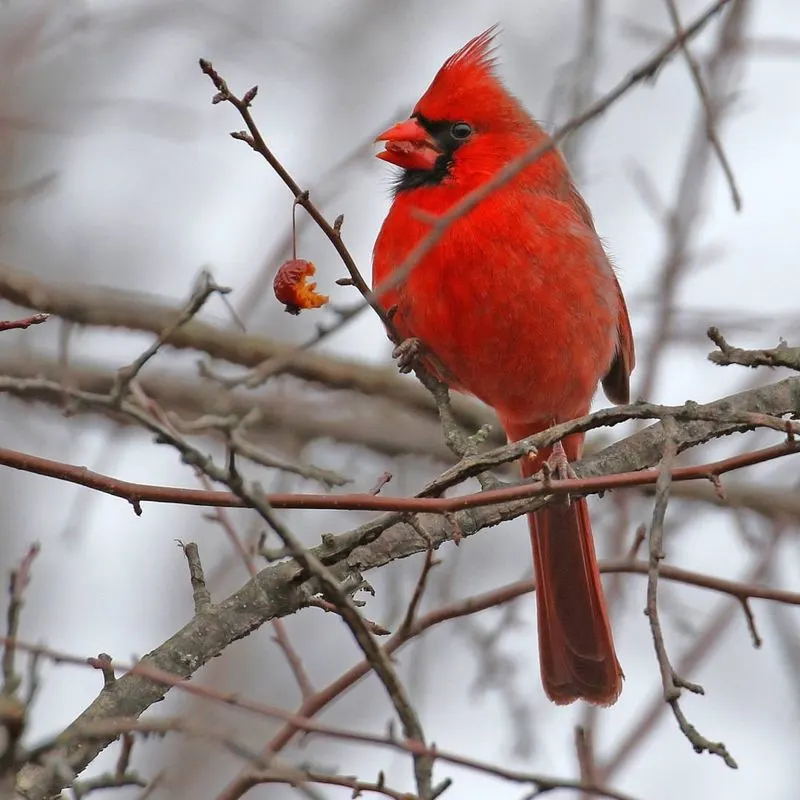
The Northern Cardinal stands out like a brilliant jewel against the stark winter landscape. Males boast a vibrant red color, while females are elegantly clothed in warm brown with subtle reddish tinges.
Their enchanting presence is complemented by their melodic songs that can lift your spirits on the coldest days.
Cardinals are non-migratory, making them easy to spot throughout the winter months. They prefer backyard feeders, especially those with sunflower seeds. Providing a consistent food source ensures these beauties grace your garden. Their striking appearance and sweet tunes make them a favorite among bird enthusiasts.
Blue Jay
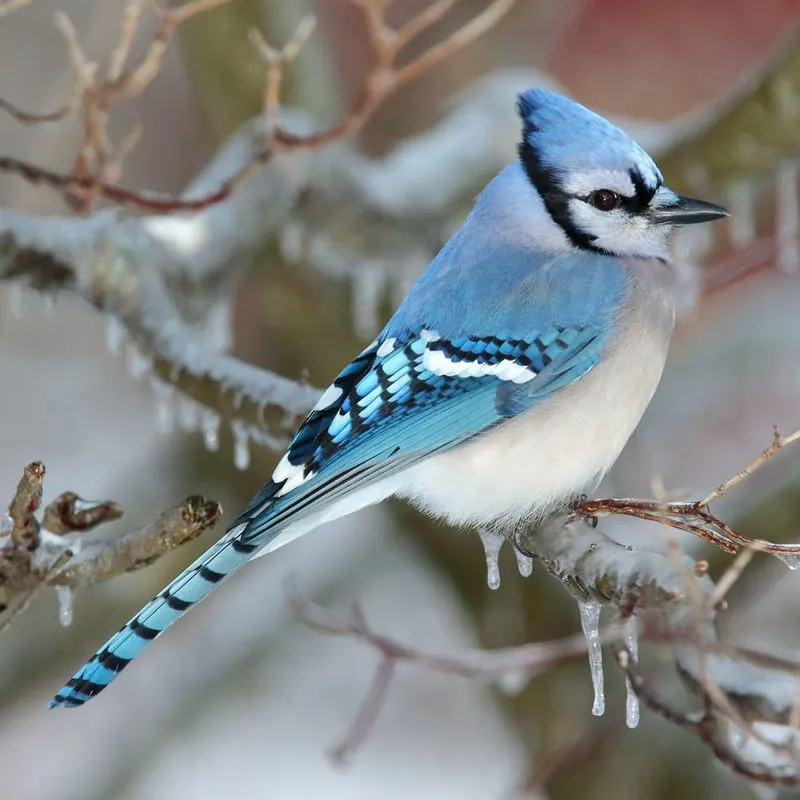
Blue Jays are known for their intelligence and complex social behavior. These striking birds, adorned with bold blue, white, and black plumage, add a splash of color to any winter setting.
Famous for their energetic calls and curious nature, they often mimic other birds, adding a unique charm to their presence.
Blue Jays are frequent visitors to backyard feeders, particularly favoring peanuts and suet. By offering these treats, you can enjoy watching their playful antics. Their lively personality and striking appearance ensure they’re always the center of attention in any winter garden.
American Goldfinch
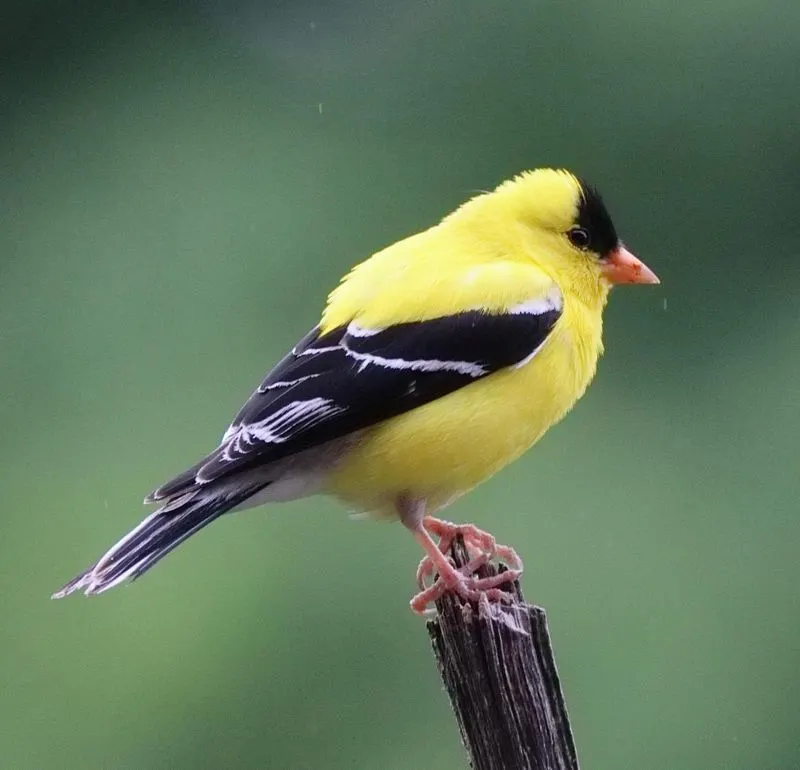
In winter, the American Goldfinch trades its bright yellow summer attire for a more subdued olive-brown plumage. Despite their less vibrant winter look, these birds are delightful to watch as they flit about in flocks.
Goldfinches are acrobatic and often seen hanging upside down to feed on thistle or sunflower seeds. Their gentle, twittering calls add a soft melody to the chilly air. Providing a mix of seeds in your feeder will attract these graceful visitors. Their playful social behavior and adaptability make them a charming addition to any winter garden.
Dark-eyed Junco
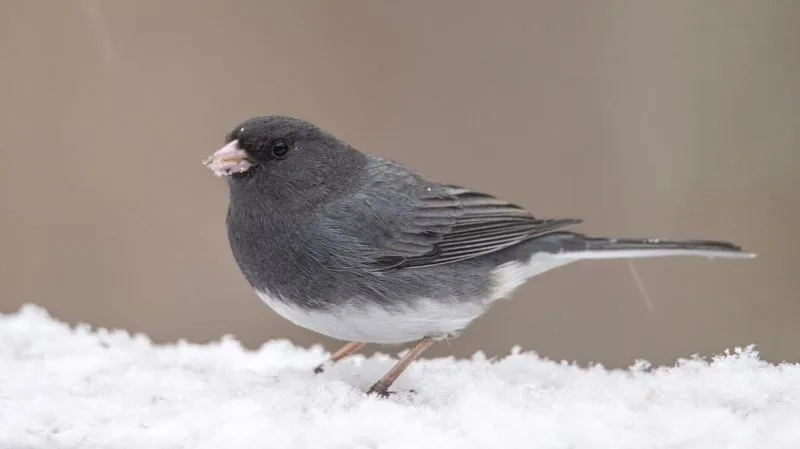
Dark-eyed Juncos, often called “snowbirds,” are synonymous with winter as they arrive with the first snowfall. These small, sparrow-like birds are easily recognized by their slate-gray feathers and white belly. Juncos are ground feeders, often seen hopping around the snow to uncover seeds.
Their gentle presence and cheerful calls can brighten up a dreary winter day. To attract them, scatter seeds on the ground or offer a platform feeder. Observing their foraging behavior offers a glimpse into their resourcefulness. Their understated beauty is a reminder of nature’s subtle elegance.
Black-capped Chickadee
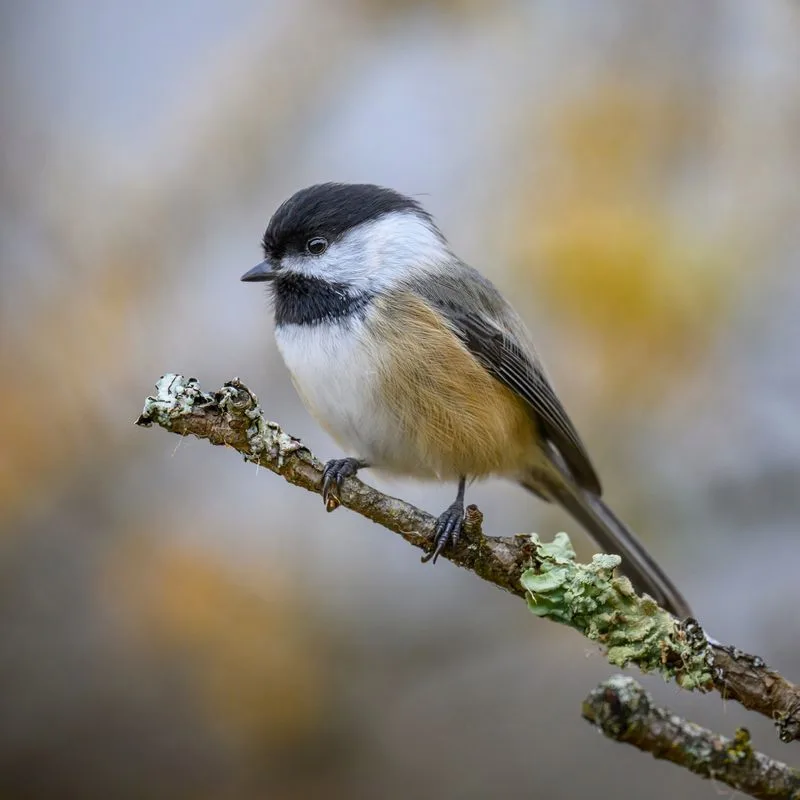
Black-capped Chickadees are small, inquisitive birds known for their distinctive black cap and bib, contrasting beautifully with their white cheeks.
These energetic birds are a constant source of entertainment as they flit about, often hanging upside down to retrieve seeds.
Chickadees are fearless and may even feed from your hand if you’re patient. They are attracted to sunflower seeds and suet. Their cheerful “chick-a-dee-dee-dee” call is a familiar sound in winter gardens. Their friendliness and acrobatics make them delightful companions during the cold months.
Mourning Dove
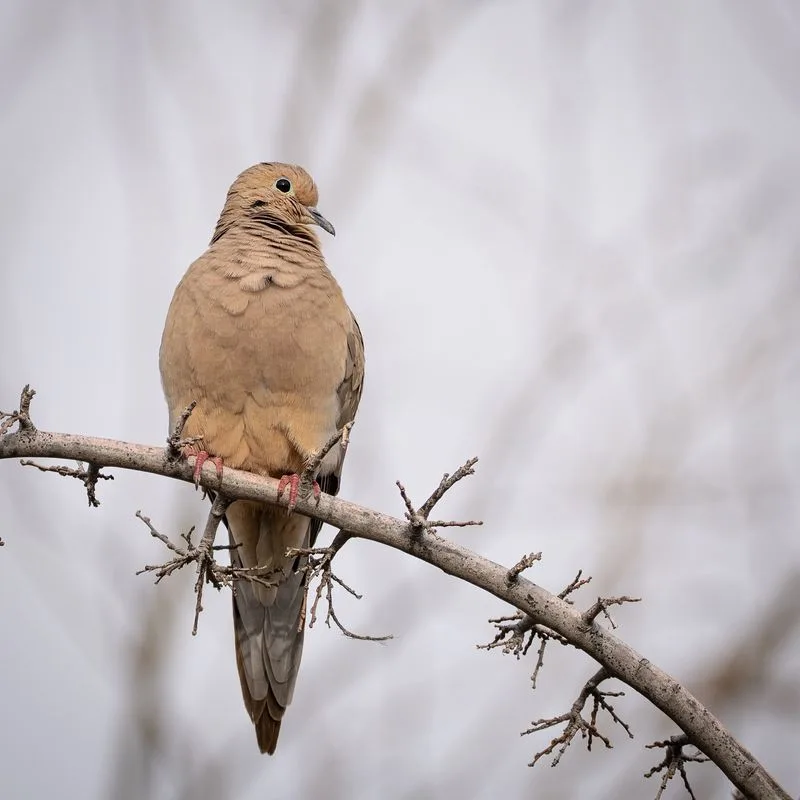
Mourning Doves bring a sense of peace with their gentle cooing and soft gray-brown plumage. Despite their name, these birds are a calming presence in the winter landscape. Their slender bodies and long tails distinguish them from other backyard birds.
Mourning Doves are ground feeders, often seen pecking at seeds beneath feeders. They appreciate a mix of grains and seeds. Their serene demeanor and soothing songs provide a tranquil backdrop to the bustling activity of more energetic birds. Observing their graceful flight adds a touch of elegance to winter days.
Red-bellied Woodpecker
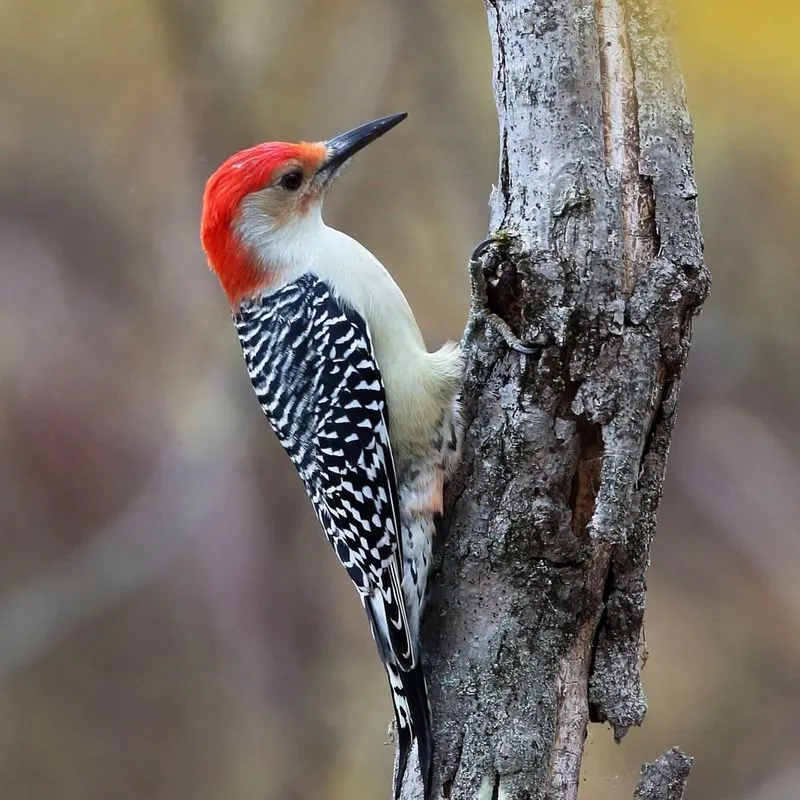
The Red-bellied Woodpecker is a striking addition to any winter birdwatcher’s list. Despite its name, the slight red hint on its belly is less noticeable than the vibrant red cap on its head.
Its black and white barred back creates an eye-catching pattern as it climbs tree trunks. This woodpecker is often heard before it’s seen, thanks to its loud calls and drumming.
They visit feeders for suet and nuts. Their bold colors and unmistakable sounds add excitement to quiet winter days. Watching their skilled maneuvers is a rewarding experience for any bird enthusiast.
Tufted Titmouse
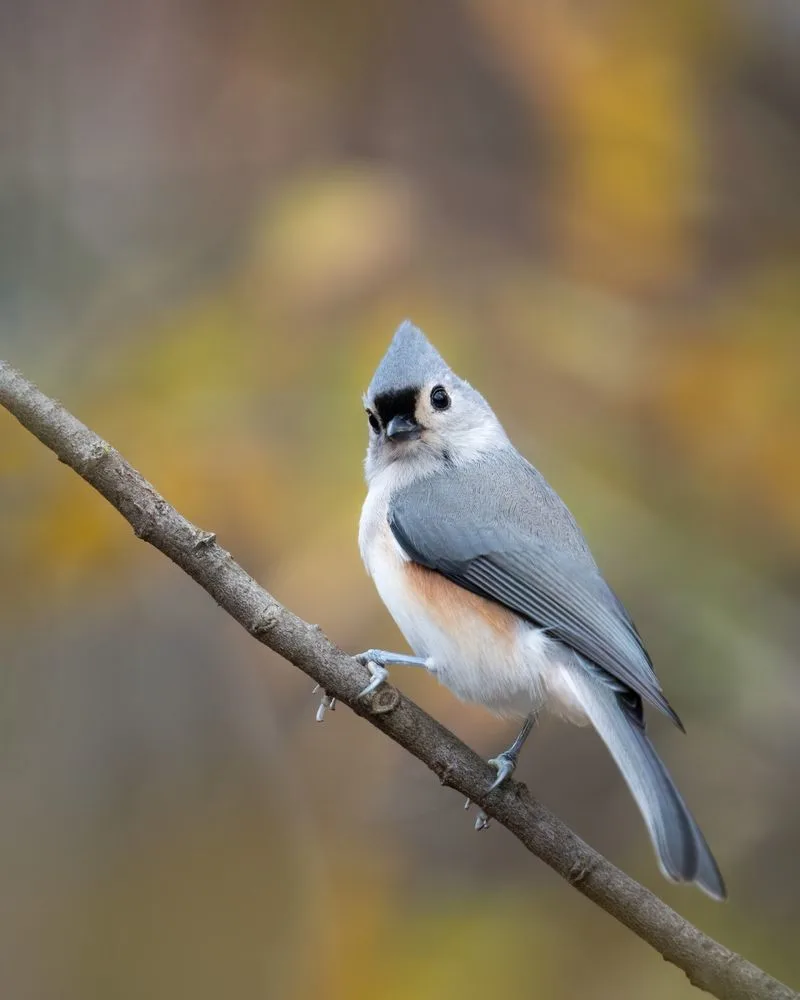
The Tufted Titmouse, with its charming tufted crest and large, dark eyes, is a delightful visitor during winter. These birds are known for their curious nature and energetic movements, often seen flitting around feeders. Their soft gray plumage and distinctive calls make them easily recognizable.
Titmice are fond of sunflower seeds and suet, which helps attract them to your garden. They are social birds, often found in small groups, adding lively chatter to the winter silence. Their endearing antics and friendly demeanor make them a joy to observe.
White-breasted Nuthatch
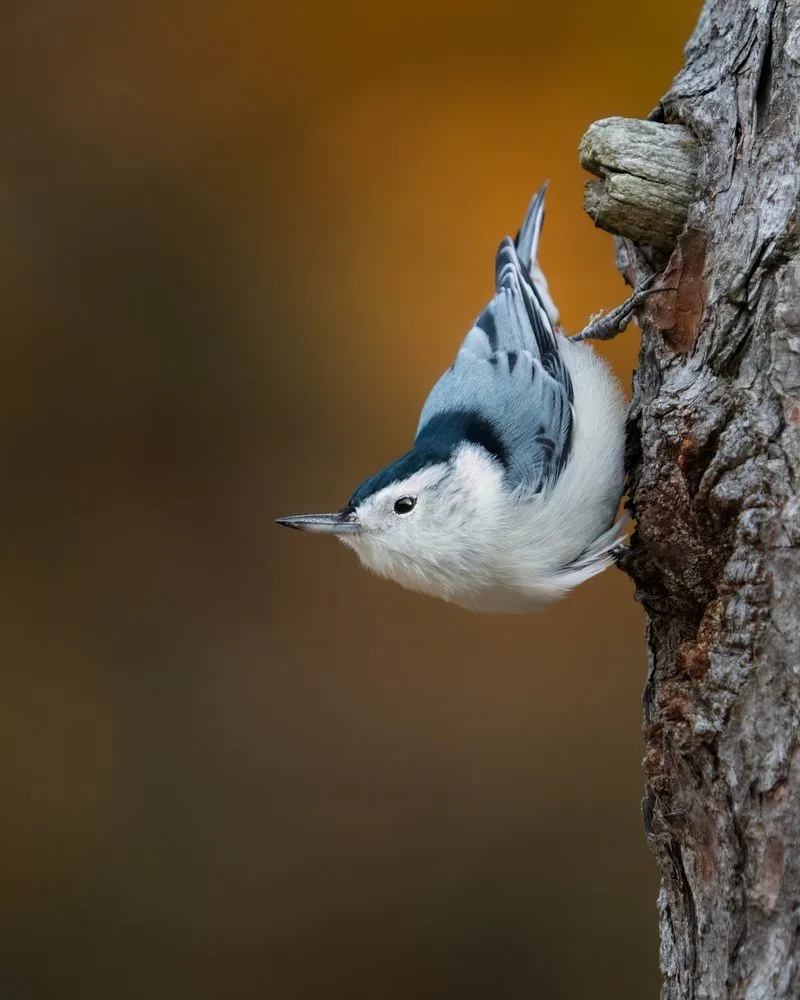
White-breasted Nuthatches are distinctive for their unique ability to move headfirst down tree trunks. Their glossy blue-gray backs and white underparts make them a striking sight against the winter bark. These agile birds are frequent feeder visitors, favoring sunflower seeds and suet.
Their nasal “yank-yank” calls are unmistakable and add to their charm. Nuthatches are known for wedging seeds into bark crevices and hammering them open with their beaks. Their acrobatic skills and lively presence add a dynamic touch to winter birdwatching. Observing their clever antics is both entertaining and educational.
White-throated Sparrow
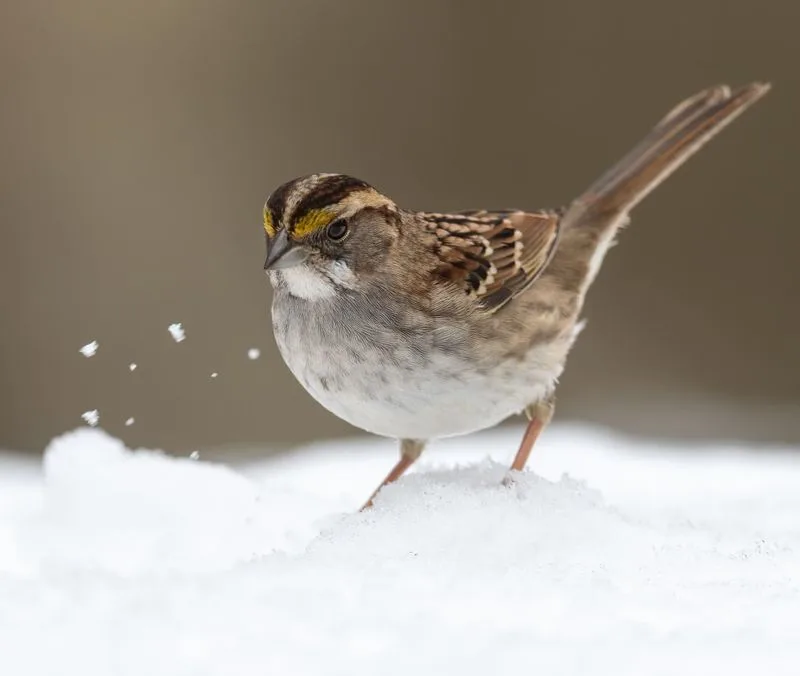
White-throated Sparrows are a winter delight, easily identifiable by the bright white throat patch and yellow lores. Their sweet, whistled song often fills the crisp air, providing a gentle soundtrack to the season.
These sparrows prefer dense shrubbery and are ground feeders, often seen scratching through leaf litter in search of food.
Offering mixed seeds and cracked corn can attract these charming birds to your backyard. Their gentle presence and melodious calls create a soothing ambiance, turning any garden into a winter wonderland. They remind us of the simple joys of nature.
House Finch
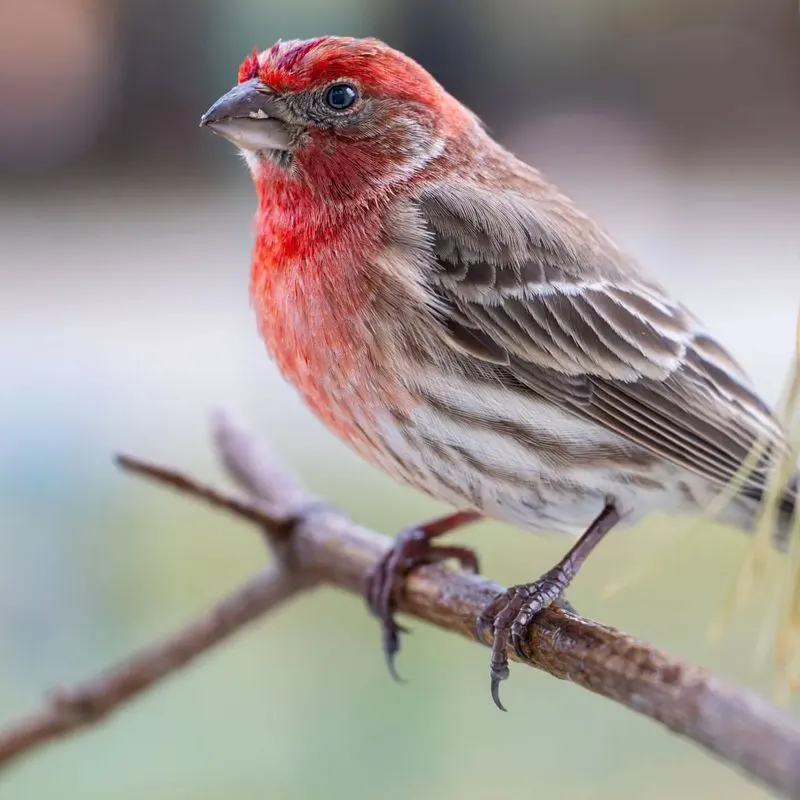
House Finches bring a splash of warmth with their vibrant plumage. Males showcase rosy-red feathers on their heads and chests, while females are elegantly attired in brown streaks.
Their cheerful tweets and melodious songs break the winter silence, providing lively entertainment. House Finches are adaptable and thrive in both urban and rural settings, often visiting feeders filled with sunflower seeds. Their social nature means you’ll often see them in small flocks.
This camaraderie adds a bustling energy to any garden. Their colorful appearance ensures they’re a favorite among birdwatchers.

